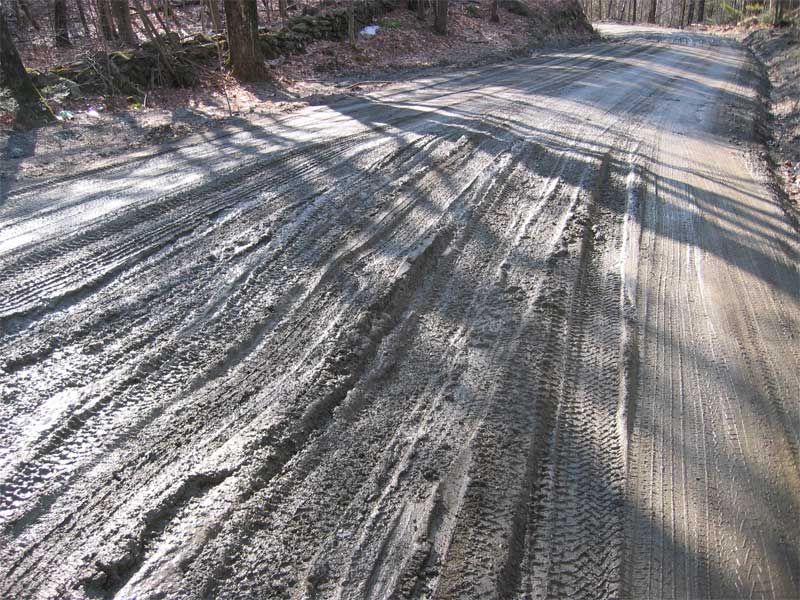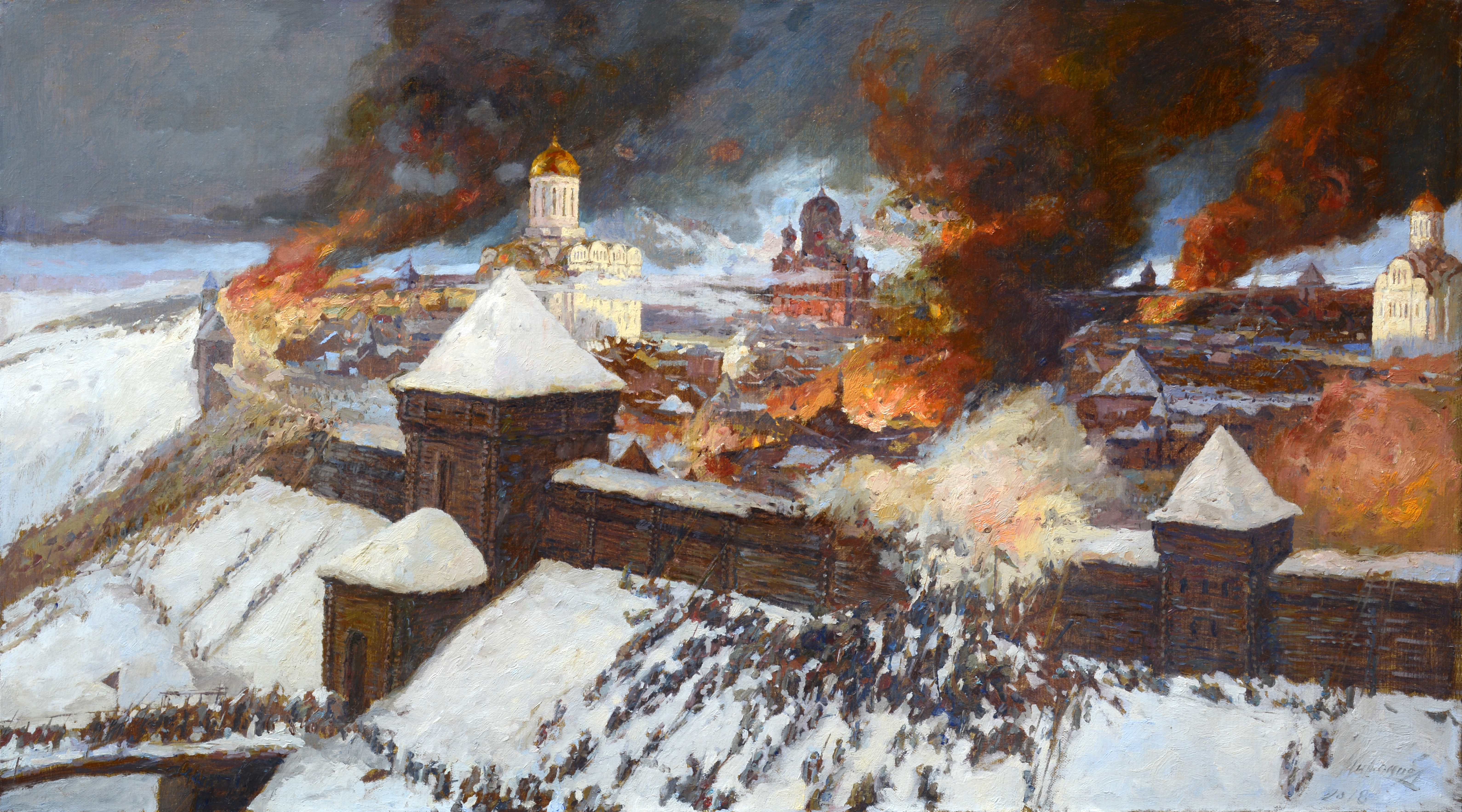|
Rasputitsa
''Rasputitsa'' (from ; literally "season of bad roads") is the mud season that occurs in various rural areas of Eastern Europe, when the rapid snowmelt or thawing of frozen ground combined with wet weather in spring, or heavy rains in autumn lead to muddy conditions that make travel on unpaved roads problematic and even treacherous. Rasputitsa has repeatedly affected wars by causing military vehicles and artillery pieces to become mired in the mud. In conjunction with the Russian Winter, general conditions of winter, rasputitsa has been credited with encumbering the military campaigns of First French Empire, Napoleonic France in 1812 and Nazi Germany during Operation Barbarossa, as well as all belligerents in the Russian invasion of Ukraine, 2022 Russian invasion of Ukraine. In countries of the former Soviet Union, the concept is applied to two periods during the year – spring and autumn – and also refers to impassable road conditions during such a period, specifically the h ... [...More Info...] [...Related Items...] OR: [Wikipedia] [Google] [Baidu] |
Mud Season
Mud season (US English) or breakup (Canadian English) is a period in late winter and early spring when travel over ice is no longer safe and travel overland is more difficult as frozen earth thaws and soil becomes muddy from Meltwater, melting snow. Description Mud season occurs in places where the ground freezes in winter and thaws in spring. Dirt roads and paths become muddy because the deeply frozen ground thaws from the surface down as the air temperature warms above melting point, freezing. The frozen lower layers of ground prevent water from percolating into the soil so the surface layers of soil become saturated with water. Clay-based soil, especially when combined with poor drainage, is especially prone to forming deep and sticky mud. In sandy soils, the top unfrozen layer becomes waterlogged during thaws, but does not form viscous mud. On the Great Plains, a particular type of clay (Bentonite, bentonite clay, or aluminum phyllosilicate) turns into a sticky form of soil ... [...More Info...] [...Related Items...] OR: [Wikipedia] [Google] [Baidu] |
French Invasion Of Russia
The French invasion of Russia, also known as the Russian campaign (), the Second Polish War, and in Russia as the Patriotic War of 1812 (), was initiated by Napoleon with the aim of compelling the Russian Empire to comply with the Continental System, continental blockade of the United Kingdom. Widely studied, Napoleon's incursion into Russia stands as a focal point in military history, recognized as among the list of battles by casualties, most devastating military endeavors globally. In a span of fewer than six months, the campaign exacted a staggering toll, claiming the lives of nearly a million soldiers and civilians. On 24 June 1812 and subsequent days, the initial wave of the multinational Grande Armée crossed the Neman River, marking the entry from the Duchy of Warsaw into Russia. Employing extensive forced marches, Napoleon rapidly advanced his army of nearly half a million individuals through European Russia, Western Russia, encompassing present-day Belarus, in a b ... [...More Info...] [...Related Items...] OR: [Wikipedia] [Google] [Baidu] |
Operation Barbarossa
Operation Barbarossa was the invasion of the Soviet Union by Nazi Germany and several of its European Axis allies starting on Sunday, 22 June 1941, during World War II. More than 3.8 million Axis troops invaded the western Soviet Union along a front, with the main goal of capturing territory up to a line between Arkhangelsk and Astrakhan, known as the A-A line. The attack became the largest and costliest military offensive in history, with around 10 million combatants taking part in the opening phase and over 8 million casualties by the end of the operation on 5 December 1941. It marked a major escalation of World War II, opened the Eastern Front—the largest and deadliest land war in history—and brought the Soviet Union into the Allied powers. The operation, code-named after the Holy Roman Emperor Frederick Barbarossa ("red beard"), put into action Nazi Germany's ideological goals of eradicating communism and conquering the western Soviet Union to repopulate it w ... [...More Info...] [...Related Items...] OR: [Wikipedia] [Google] [Baidu] |
Sponge (tool)
A sponge ( ) is a cleaning aid made of soft, porous material. Typically used for cleaning impervious surfaces, sponges are especially good at absorbing water and water-based solutions. Originally made from natural sea sponges, they are most commonly made from synthetic materials today. Etymology The word comes from the Ancient Greek term (), which in turn is probably derived from a Mediterranean Pre-Indo European substrate. History The first reference of sponges used for hygiene dates from Ancient Greece. Competitors of the Olympic Games bathed themselves with sea sponges soaked in olive oil or perfume before competing. In the book ''Odyssey'' by the Greek poet Homer, the god Hephaestus cleans his hands, face, and chest with a sea sponge, and the servants in the Odysseus palace used sea sponges to clean the tables after the meals the suitors of Penelope had there. The Greek philosophers Aristotle and Plato mentioned sea sponges in both scientific and historic contexts i ... [...More Info...] [...Related Items...] OR: [Wikipedia] [Google] [Baidu] |
Trakai
Trakai (; see Trakai#Names and etymology, names section for alternative and historic names) is a city and lake resort in Lithuania. It lies west of Vilnius, the capital of Lithuania or just from the administrative limits of the Lithuanian capital city. Because of its proximity to Vilnius, Trakai is a popular tourist destination. Trakai is the administrative centre of Trakai district municipality. The city is inhabited by 5,357© Department of Statistics to the Government of the Republic of Lithuania M3010210: Population at the beginning of the year. people, according to 2007 estimates. A notable feature of Trakai is that the city was built and preserved by people of different nationalities. Historically, communities of Crimean Karaites, Karaims, Lipka Tatars, Tatars, Lith ... [...More Info...] [...Related Items...] OR: [Wikipedia] [Google] [Baidu] |
Vilna
Vilnius ( , ) is the capital of and List of cities in Lithuania#Cities, largest city in Lithuania and the List of cities in the Baltic states by population, most-populous city in the Baltic states. The city's estimated January 2025 population was 607,667, and the Vilnius urban area (which extends beyond the city limits) has an estimated population of 747,864. Vilnius is notable for the architecture of its Vilnius Old Town, Old Town, considered one of Europe's largest and best-preserved old towns. The city was declared a World Heritage Site, UNESCO World Heritage Site in 1994. The architectural style known as Vilnian Baroque is named after the city, which is farthest to the east among Baroque architecture, Baroque cities and the largest such city north of the Alps. The city was noted for its #Demographics, multicultural population during the Polish–Lithuanian Commonwealth, with contemporary sources comparing it to Babylon. Before World War II and The Holocaust in Lithuania, th ... [...More Info...] [...Related Items...] OR: [Wikipedia] [Google] [Baidu] |
Battle Of Krasnoi
The Battle of Krasnoi (at Krasny or Krasnoe) unfolded from 15 to 18 November 1812 marking a critical episode in Napoleon's arduous retreat from Moscow.Lieven, p. 267. Over the course of six skirmishes the Russian forces under field marshal Kutuzov inflicted significant blows upon the remnants of the , already severely weakened by attrition warfare.Foord, p. 343.Lieven, pp. 267–268. These confrontations, though not escalated into full-scale battles, led to substantial losses for the French due to their depleted weapons and horses. Throughout the four days of combat, Napoleon attempted to rush his troops, stretched out in a march, past the parallel-positioned Russian forces along the high road. Despite the Russian army's superiority in horse and manpower, Kutuzov hesitated to launch a full offensive, according to Mikhail Pokrovsky fearing the risks associated with facing Napoleon head-on. Instead, he hoped that hunger, cold and decay in discipline would ultimately wear dow ... [...More Info...] [...Related Items...] OR: [Wikipedia] [Google] [Baidu] |
Mongol Invasion Of Kievan Rus'
The Mongol Empire invaded and conquered much of Kievan Rus' in the mid-13th century, sacking numerous cities such as Principality of Ryazan, Ryazan, Principality of Yaroslavl, Yaroslavl, Principality of Pereyaslavl, Pereyaslavl and Vladimir-Suzdal, Vladimir, including the largest: Grand Principality of Kiev, Kiev (50,000 inhabitants) and Principality of Chernigov, Chernigov (30,000 inhabitants). The Siege of Kiev (1240), siege of Kiev in 1240 by the Mongols is generally held to mark the end of the state of Kievan Rus', which had already been undergoing Feudal fragmentation, fragmentation. Many other principalities and urban centres in the northwest and southwest escaped complete destruction or suffered little to no damage from the Mongol invasion, including Kingdom of Galicia–Volhynia, Galicia–Volhynia, Pskov Land, Pskov, Principality of Smolensk, Smolensk, Principality of Polotsk, Polotsk, Principality of Vitebsk, Vitebsk, and probably Vladimir-Suzdal, Rostov and Uglic ... [...More Info...] [...Related Items...] OR: [Wikipedia] [Google] [Baidu] |
Veliky Novgorod
Veliky Novgorod ( ; , ; ), also known simply as Novgorod (), is the largest city and administrative centre of Novgorod Oblast, Russia. It is one of the oldest cities in Russia, being first mentioned in the 9th century. The city lies along the Volkhov River just downstream from its outflow from Lake Ilmen and is situated on the M10 federal highway connecting Moscow and Saint Petersburg. UNESCO recognized Novgorod as a World Heritage Site in 1992. The city has a population of At its peak during the 14th century, the city was the capital of the Novgorod Republic and was one of Europe's largest cities. The "Великий" part was added to the city's name in 1999. Climate Veliky Novgorod has a humid continental climate (Köppen ''Dfb''). The city has warm summers with temperatures reaching over 30 °C (86 °F) and relatively cold winters with frequent snowfall. The lowest air temperature ever recorded is -45 °C (-49 °F). The warmest month is July with a d ... [...More Info...] [...Related Items...] OR: [Wikipedia] [Google] [Baidu] |
Russian Arctic
The Extreme North or the Far North is a large part of Russia located mainly north of the Arctic Circle and boasting enormous mineral and natural resources. Its total area is about , comprising about one-third of Russia's total area. Formally, the regions of the Extreme North comprise the whole of Chukotka Autonomous Okrug, Kamchatka Krai, Magadan Oblast, Murmansk Oblast and Sakha, as well as certain parts and cities of Arkhangelsk Oblast, Irkutsk Oblast, Khabarovsk Krai, Komi Republic, Krasnoyarsk Krai, Republic of Karelia, Sakhalin Oblast, Tuva, Tyumen Oblast, as well as all islands of the Arctic Ocean, its seas, the Bering Sea, and the Sea of Okhotsk. Due to the remoteness and the harsh conditions of the area, since the Soviet times people who work there have traditionally been entitled by the Russian government to higher wages and many other benefits, including earlier retirement age, than workers of other regions. As a result of the climate and environment, the indige ... [...More Info...] [...Related Items...] OR: [Wikipedia] [Google] [Baidu] |





